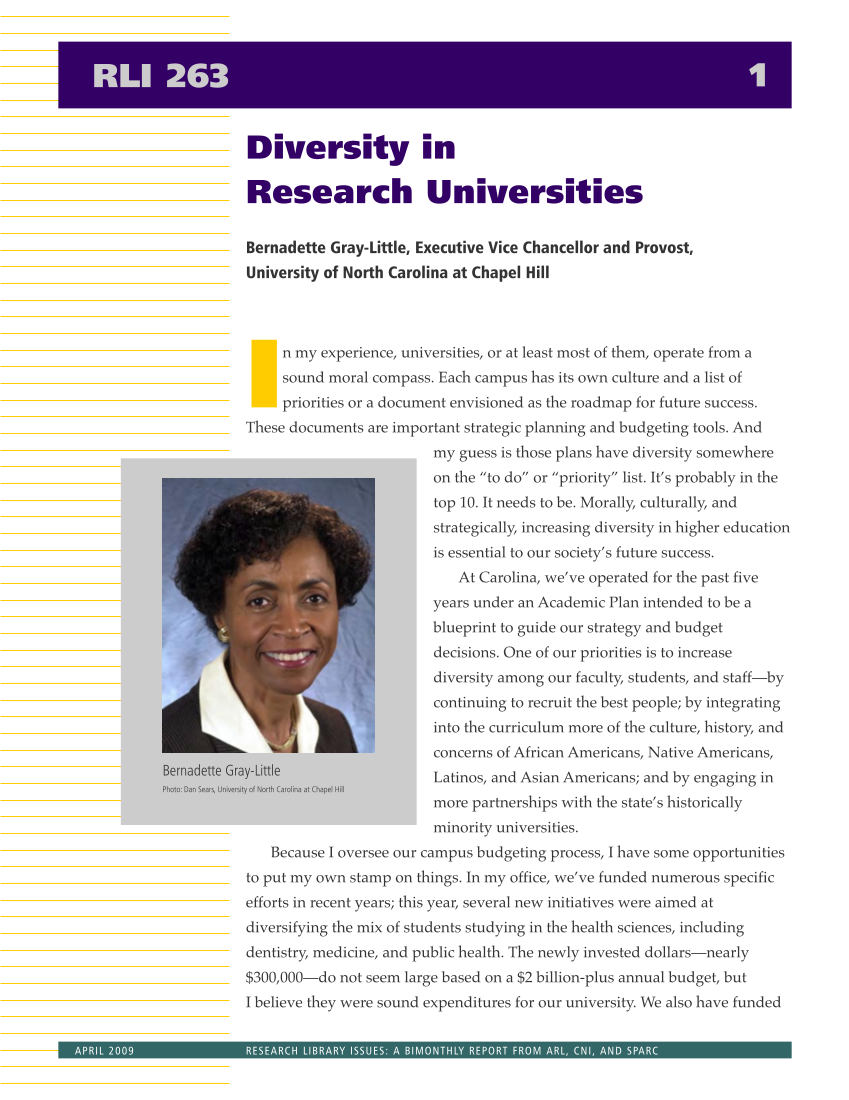I n my experience, universities, or at least most of them, operate from a sound moral compass. Each campus has its own culture and a list of priorities or a document envisioned as the roadmap for future success. These documents are important strategic planning and budgeting tools. And my guess is those plans have diversity somewhere on the “to do” or “priority” list. It’s probably in the top 10. It needs to be. Morally, culturally, and strategically, increasing diversity in higher education is essential to our society’s future success. At Carolina, we’ve operated for the past five years under an Academic Plan intended to be a blueprint to guide our strategy and budget decisions. One of our priorities is to increase diversity among our faculty, students, and staff—by continuing to recruit the best people by integrating into the curriculum more of the culture, history, and concerns of African Americans, Native Americans, Latinos, and Asian Americans and by engaging in more partnerships with the state’s historically minority universities. Because I oversee our campus budgeting process, I have some opportunities to put my own stamp on things. In my office, we’ve funded numerous specific efforts in recent years this year, several new initiatives were aimed at diversifying the mix of students studying in the health sciences, including dentistry, medicine, and public health. The newly invested dollars—nearly $300,000—do not seem large based on a $2 billion-plus annual budget, but I believe they were sound expenditures for our university. We also have funded RLI 263 1 APRIL 2009 RESEARCH LIBRARY ISSUES: A BIMONTHLY REPORT FROM ARL, CNI, AND SPARC Diversity in Research Universities Bernadette Gray-Little, Executive Vice Chancellor and Provost, University of North Carolina at Chapel Hill Bernadette Gray-Little Photo: Dan Sears, University of North Carolina at Chapel Hill











































